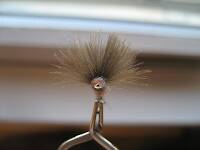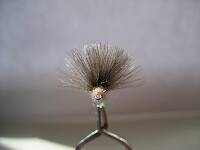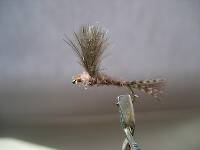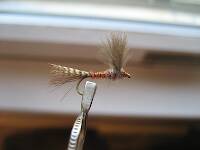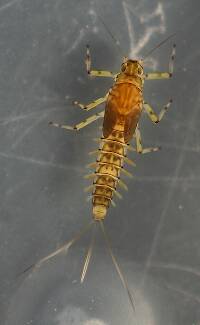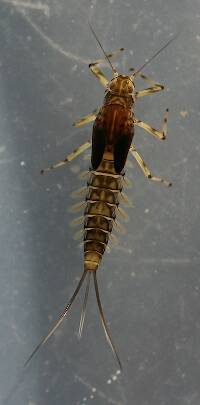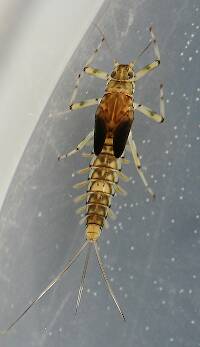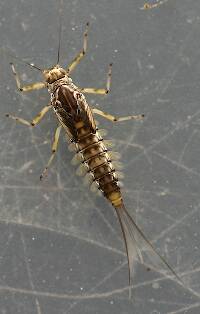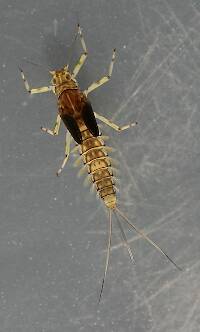
Blue-winged Olives
Baetis
Tiny Baetis mayflies are perhaps the most commonly encountered and imitated by anglers on all American trout streams due to their great abundance, widespread distribution, and trout-friendly emergence habits.
Featured on the forum

This specimen resembled several others of around the same size and perhaps the same species, which were pretty common in my February sample from the upper Yakima. Unfortunately, I misplaced the specimen before I could get it under a microscope for a definitive ID.

Troutnut is a project started in 2003 by salmonid ecologist Jason "Troutnut" Neuswanger to help anglers and
fly tyers unabashedly embrace the entomological side of the sport. Learn more about Troutnut or
support the project for an enhanced experience here.
Lastchance on Mar 10, 2013March 10th, 2013, 3:36 pm EDT
http://www.troutnut.com/specimen/694
Just for the sake of discussion. Is (the link above) the Baetis nymph we're imitating in PA right now? If so, would you consider the abdomen color a medium olive and the thorax a darker olive. I was turning over rocks yesterday on Spring Creek and the nymphs appeared to be a lighter color than my dubbing mix. I catch fish with them, but I'm always trying to improve. I may be mixing mine too dark.
I use the Flyfisher's Paradise recipe:
40% Dark Brown Rabbit (Hareline #24);
40% Black Rabbit (Hareline #7);
and 20% Olive Sparkle Yarn
Just for the sake of discussion. Is (the link above) the Baetis nymph we're imitating in PA right now? If so, would you consider the abdomen color a medium olive and the thorax a darker olive. I was turning over rocks yesterday on Spring Creek and the nymphs appeared to be a lighter color than my dubbing mix. I catch fish with them, but I'm always trying to improve. I may be mixing mine too dark.
I use the Flyfisher's Paradise recipe:
40% Dark Brown Rabbit (Hareline #24);
40% Black Rabbit (Hareline #7);
and 20% Olive Sparkle Yarn
Martinlf on Mar 10, 2013March 10th, 2013, 6:40 pm EDT
Bruce, I think Steve made this up to represent nymphs right at the time of emergence, when they darken, though I suspect that nymphs often vary some in color. I have some of the FFP recipe dubbing and have used it a bit, but mostly tend to tie my baetis nymphs lighter and more olive.
"He spread them a yard and a half. 'And every one that got away is this big.'"
--Fred Chappell
--Fred Chappell
Quick Reply
Related Discussions
Topic
Replies
Last Reply
4
May 17, 2010
by Lastchance
by Lastchance



